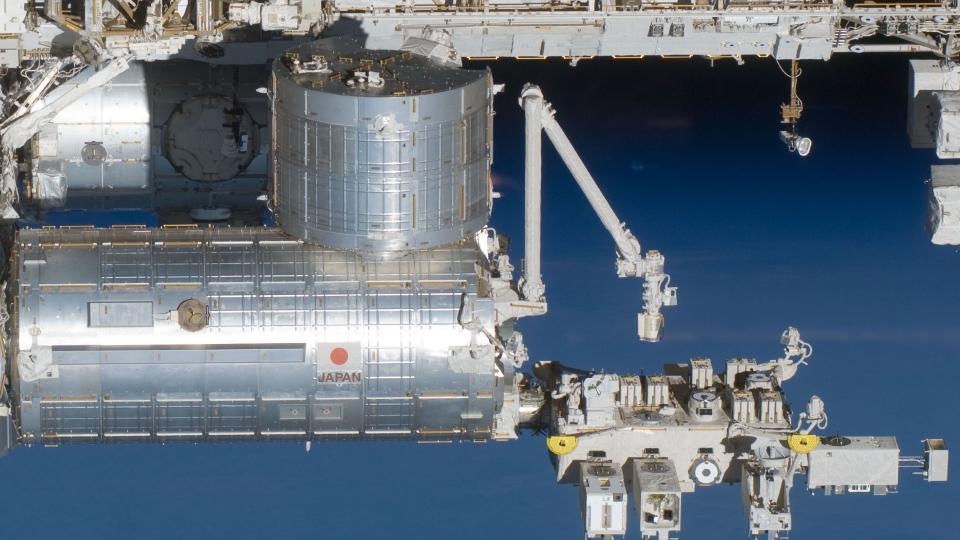This mysterious streak of light over California is actually an old space station antenna meeting its doom (video)

Last Friday night (March 17), as many were marking the celebration of St. Patrick's Day by quenching a heavy thirst at their nearest watering hole, some skyward-gazing citizens in Sacramento, California were left wide-eyed at the site of flaming trails of light overhead.
Witnesses of the fiery phenomenon, which lasted about 40 seconds, took to social media with videos of the mysterious sighting, and it didn't take long for the Internet to provide the puzzled patrons with some answers, according to a CBS News Sacramento report.
After witnessing the event, the owner of King Cong Brewing Company posted a video to the brewpub's Instagram account to consult the masses on what it was they saw. Astronomer and astrophysicist at the Harvard–Smithsonian Center for Astrophysics and verified member of the orbital police Jonathan McDowell is known for solving these types of orbital enigmas, and was able to quickly classify the culprit.
Related: NASA scientists push for a treaty to tackle risky 'space junk'

In a thread posted to Twitter, McDowell indicates that Friday's fireballs were the natural end-of-life result of space debris burning up in Earth's atmosphere, specially, a relatively small communications package once attached to the International Space Station (ISS).
Designated ICS-EF, the 683 lbs (310 kg) retired component was responsible for enabling communications between the ISS's Kibo module and Mission Control. ICS-EF launched in 2009, and was jettisoned from the ISS into a decaying orbit in 2020.
Sightings such as this are likely to become more common. Currently, NASA and the Department of Defense track up to 27,000 known pieces of space debris, and companies like SpaceX are launching satellites in the thousands — all designed with atmospheric disintegration following their operational usefulness. And while there is little risk of any of these fireballs of space debris in the sky becoming craters in the ground, there is always a risk posed to satellites and other vehicles in orbit.
RELATED STORIES:
— NASA scientists push for a treaty to tackle risky 'space junk'
— International Space Station fires thrusters to dodge space junk
— Japan's New Space Laboratory Opens Aboard Station
As recently as March 6, the ISS had to execute a maneuver to avoid a potential collision with one of a number of satellites whose decaying orbits are beginning to encroach on the space station's flight path.
Currently, there are several proposed ideas in the space industry on how to deal with space debris and an increasingly crowded low Earth orbit, but none have yet to be put in active operation.
Follow us @Spacedotcom, or on Facebook and Instagram.

